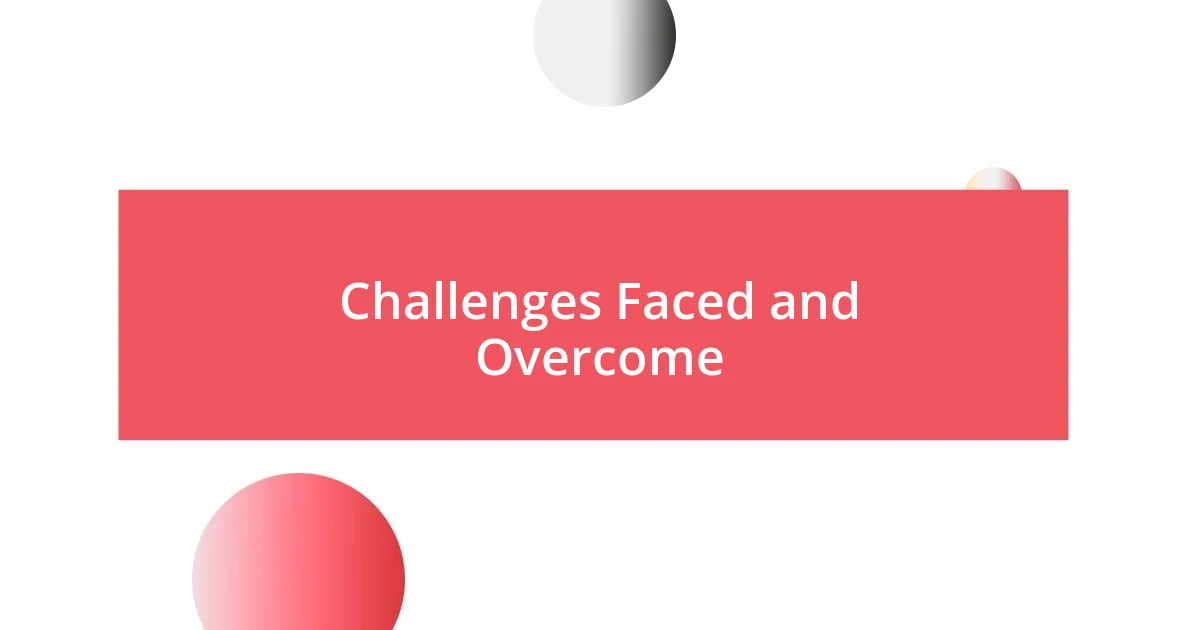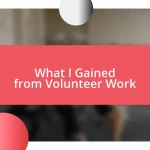Key takeaways:
- Mutual aid promotes community solidarity through reciprocal support, fostering empowerment and self-determination among members.
- Successful community initiatives, such as food drives and communal gardens, strengthen relationships and address local needs, showcasing the impact of collective action.
- Challenges, including skepticism and resource scarcity, can be transformed into opportunities for collaboration and innovation, reinforcing the importance of trust and adaptability in mutual aid efforts.

Understanding Mutual Aid Principles
Mutual aid is grounded in the belief that communities can come together to support each other, especially in times of need. I remember a time when my neighborhood organized a food drive during a local crisis; it was incredible to see diverse individuals unite for a common purpose. How often do we overlook the strength found in solidarity?
At its core, mutual aid emphasizes reciprocity and shared responsibility. It’s not just about giving; it’s also about receiving, creating a cycle of support that strengthens bonds within a community. I’ve watched friends commit to helping one another—whether it’s offering childcare one week in exchange for help with home repairs the next. This exchange fosters a sense of belonging that money simply can’t buy.
The principles of mutual aid also encourage self-determination and empowerment. I’ve seen firsthand how organizing support networks can lead to greater confidence among participants. When everyone plays a role, it’s astonishing to see how people begin to realize their own potential. Doesn’t it make you wonder how many more lives could be enriched if we actively practiced these principles daily?

My Journey into Mutual Aid
My journey into mutual aid began unexpectedly. A few years back, my friend and I found ourselves discussing the challenges we faced during a tough economic period. We felt overwhelmed and isolated, but then we made a pact to help each other out. By sharing resources and brainstorming solutions together, we alleviated some of that stress. It was a simple decision that transformed our lives and ignited a passion for a larger collective effort.
As I became more involved in community initiatives, I discovered the profound joy of connecting with others. One memorable project involved collaborating with local artists to create a mural celebrating our neighborhood’s diversity. It wasn’t just about beautifying a wall; it became a bonding experience for everyone involved. I could feel the excitement in the air as we painted, laughing and sharing stories. Those moments reminded me that mutual aid is as much about fostering relationships as it is about providing support.
Engaging in mutual aid not only empowered me but also encouraged others around me to step up. I recall a neighborhood meeting where someone shared their struggles with childcare. Moved by her story, several of us offered to chip in, coordinating schedules and supporting one another. It was astounding to witness how a simple act of sharing our time led to lasting friendships and a strengthened community. Have you ever experienced that ripple effect of kindness? I know I cherish those connections more than anything.
| Experience | Impact |
|---|---|
| Food drive during a crisis | Unity and solidarity in action |
| Local artist mural project | Creating lasting relationships and community pride |
| Childcare coordination | Empowerment and shared responsibility |

Building Community Connections
Building strong community connections is at the heart of mutual aid. I often find that these connections sprout from simple acts of kindness. A couple of months ago, I noticed a neighbor struggling with groceries. Without a second thought, I offered to help carry them in. That small gesture blossomed into a warm conversation over coffee, where we shared our experiences and dreams. It’s moments like these that remind me how easy it is to connect with people when we extend a hand.
Here are a few ways to build community connections:
- Engage in Local Events: Attend farmer’s markets, fairs, or open mic nights to meet new people in a casual setting.
- Start a Conversation: Take the initiative to introduce yourself to neighbors or fellow attendees. A simple “hello” can go a long way.
- Join or Create Support Groups: Find or start a group focused on shared interests, whether it’s gardening, parenting, or book discussions.
- Volunteer Together: Organize or participate in local clean-ups or charity events, fostering teamwork and bonding.
- Share Resources: If you have tools or equipment you don’t often use, offer to lend them to community members; this builds trust and reliance on each other.
Each of these actions not only enriches our lives but helps weave a fabric of trust and empathy throughout our neighborhoods. I’ve always believed that every connection makes a community just a little bit stronger.

Organizing for Mutual Support
Organizing for mutual support requires a true understanding of community needs. From my experience, a fantastic starting point is to hold regular meetings where everyone can voice their challenges and ideas. I remember attending one such gathering that started with just a handful of us but quickly grew as more people realized the importance of sharing our experiences. We discussed everything from food insecurity to mental health resources, forming genuine bonds of trust and camaraderie in the process.
Once we identified specific needs, the real magic happened. I vividly recall our team rallying to set up a community garden when we realized many families struggled to provide fresh produce on limited budgets. I’ll never forget the smiles on everyone’s faces as we dug holes, planted seeds, and shared stories about our culinary successes. It was empowering to see how our collective effort would not just feed families, but also foster a thriving space for neighbors to connect. Have you ever felt that surge of energy when people come together for a common cause? It’s contagious!
Maintaining a structure for support is just as crucial as initiating it. In our community, we established a simple calendar to coordinate resources like meal deliveries or carpools for those who needed transportation. One afternoon, as we all gathered to discuss our evolving needs, a participant shared how unexpected rides helped her get to medical appointments, ultimately improving her health. That moment struck a chord with all of us. It reinforced the notion that consistent, organized efforts lead to big changes. Isn’t it amazing how a little planning can amplify the impact of our care for one another?

Challenges Faced and Overcome
One significant challenge I faced was the initial skepticism from some community members. I recall one conversation where a neighbor voiced concerns about sharing personal information, fearing it might be used against them. This was a pivotal moment for me. I recognized the need for trust and transparency, so I suggested we establish clear guidelines for our mutual aid group, outlining how information would be handled respectfully and confidentially. Slowly but surely, those fears began to dissipate as they witnessed our genuine commitment to support each other.
There were also moments when resources were scarce, which was incredibly disheartening. I remember a day we organized a food drive, but when it came time to distribute, we realized the donations fell short of what was needed. Instead of feeling defeated, I felt inspired. We quickly pivoted, reaching out to local businesses for help. To my delight, several restaurants stepped forward with extra meals. That day taught me that challenges often hide opportunities for collaboration, and it reinforced my belief that communities can rise to meet their needs when we pool our resources and creativity together.
Lastly, sustaining momentum was another uphill battle. I can vividly remember the fatigue settling in as our regular meetings became less populated over time. People were busy, and I understood that. To counter this, I decided to inject a little fun into the process by introducing themed meetings and activities. One night, we turned our gathering into a potluck dinner, and it was heartwarming to see everyone’s faces light up. Each shared dish sparked conversations and reignited the sense of community. I learned that keeping the energy alive requires a balance of commitment and joy; after all, isn’t the heart of mutual aid not just about meeting needs, but also creating lasting connections?

Impact of Mutual Aid Networks
Mutual aid networks create ripples of positive change within communities. I remember a moment when we set up a clothing swap, inviting families to bring items they no longer needed. Seeing people leave with bags full of clothes they loved and connecting over shared stories was truly touching. It was a powerful reminder that by sharing what we have, we can uplift each other’s lives in surprising ways.
Participating in a mutual aid network not only helps to meet immediate needs but also builds social capital within the community. During one of our initiatives, I witnessed groups of neighbors who had never met before collaborating on a local clean-up day. They bonded over shared aspirations for a cleaner environment, ultimately forging friendships that extended beyond that single event. Isn’t it remarkable how shared action can transform strangers into friends, creating a stronger social fabric in our neighborhoods?
Every small act in a mutual aid network fosters resilience. I recently participated in a food-sharing program, where members dropped off surplus produce at a designated spot. One week, a family brought an abundance of apples. Instead of letting them go to waste, the network mobilized quickly, turning the surplus into homemade applesauce. The joy on the children’s faces when they tasted their very own creation was priceless. Moments like these highlight how mutual aid doesn’t just fill gaps; it nourishes the spirit, reminding us of the sweet satisfaction in collaboration.

Lessons Learned and Future Steps
I’ve gleaned numerous insights from my experiences in mutual aid, particularly the importance of adaptability. One evening, as I was preparing for a workshop, a thunderstorm rolled in, causing many attendees to cancel last minute. Rather than rescheduling, I decided to host the workshop virtually on the spot. The unexpected shift allowed even those who were previously hesitant to join from the comfort of their own homes, and it turned out to be a fantastic success. Isn’t it fascinating how adversity often paves the way for innovation?
Reflecting on our journey, I realize that nurturing a sense of belonging is crucial for the longevity of mutual aid initiatives. I vividly remember a moment when our group gathered for a simple outdoor event; the laughter and chatter filling the air reminded me that building relationships is just as impactful as meeting immediate needs. For future projects, I plan to weave in more community-building elements, ensuring everyone feels they have a stake in our group’s purpose. How often do we underestimate the power of connection in fostering commitment?
Looking ahead, I see the potential to expand our mutual aid efforts beyond immediate assistance to long-term solutions. Recently, I found inspiration in a gardening initiative that our community took on. We transformed a vacant lot into a communal garden, where people grew food together while sharing knowledge and stories. This not only met our needs for fresh produce but also cultivated a deeper bond among participants. As we explore future steps, I believe that integrating sustainable practices will empower us to create a lasting impact, turning our efforts into a foundation for future generations. Wouldn’t it be wonderful to leave a legacy of resilience and collaboration?















